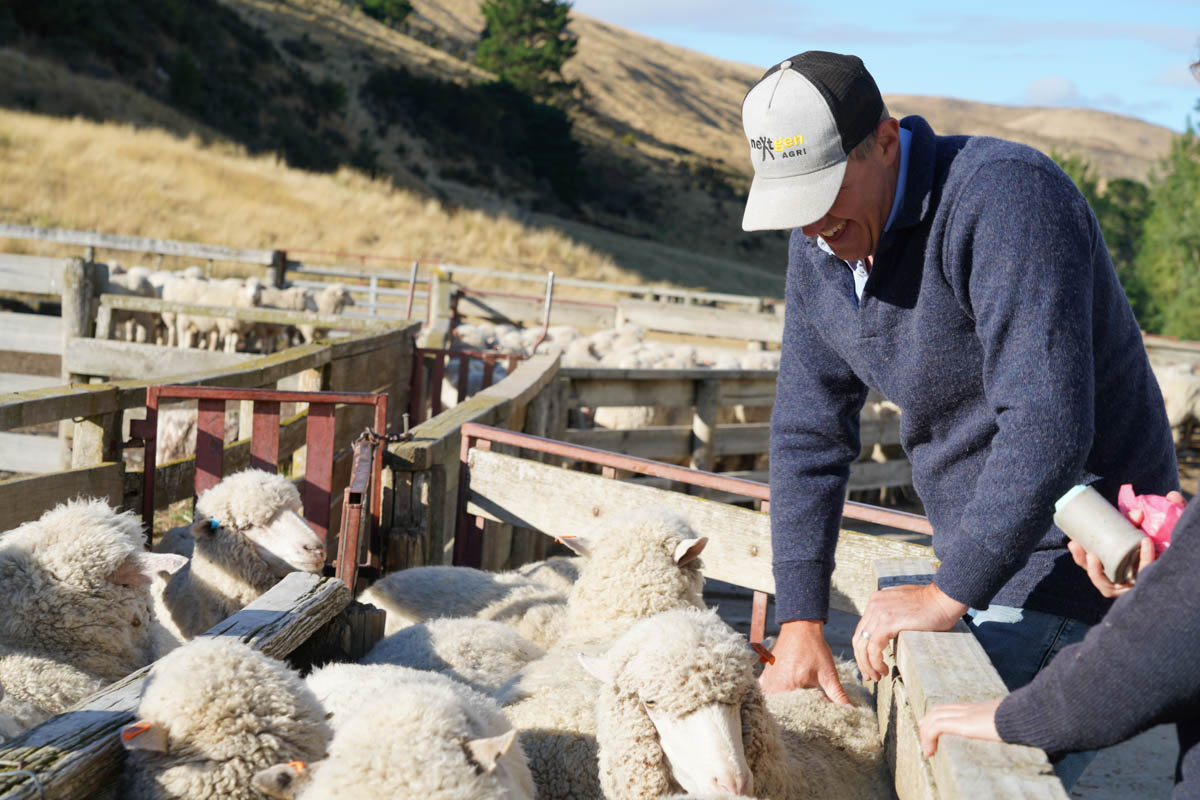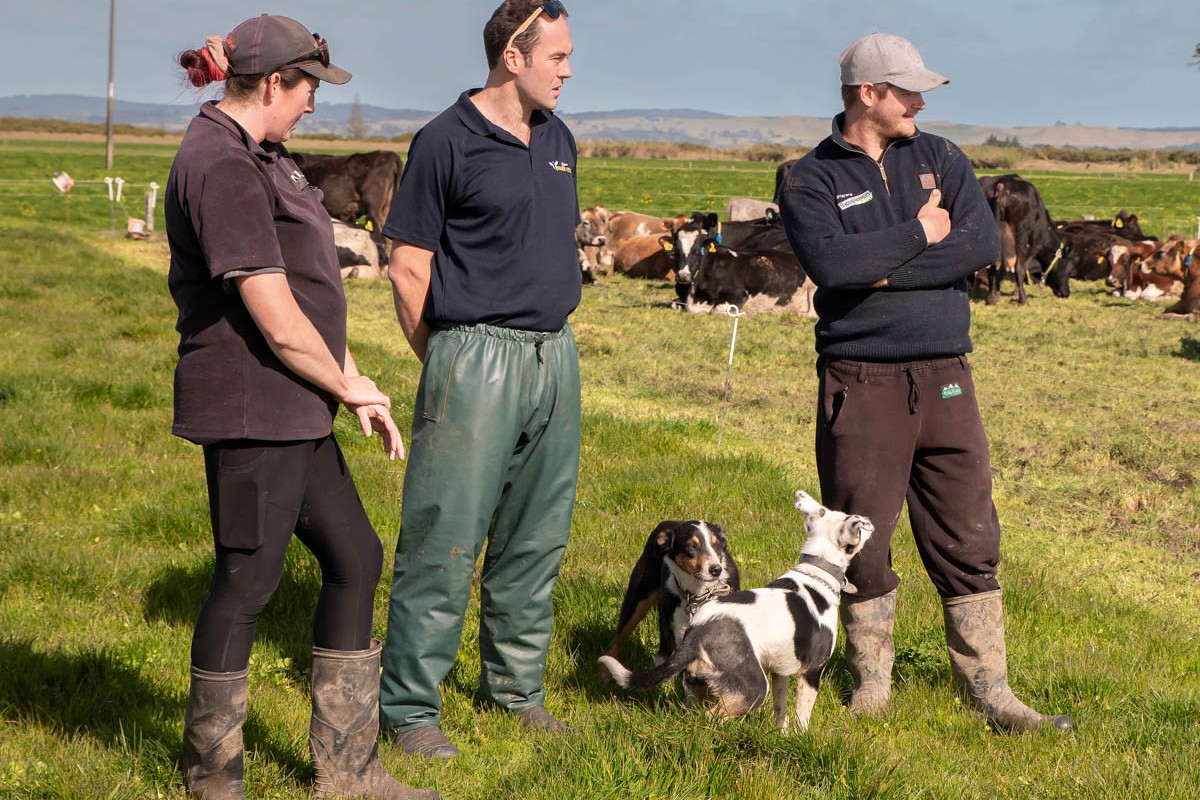Developing a King Country family farm has involved a significant change of system. Mike Bland reports.
King Country farmers Leveson and Vicki Gower are reaping the benefits of a significant shift in farm policy.
Five years ago they developed a bold plan to increase profitability and streamline management of their 674-hectare (effective) rolling to medium-hill farm at Wharepuhunga, south east of Te Awamutu.
The Gowers bought the family farm in 2006, continuing to run a traditional breeding and finishing system with some dairy support. But in 2015 they switched to intensive bull beef (Country-Wide, February 2019) and dairy grazing while simplifying the original sheep system.
Ewe numbers were reduced to about 800 and all ewes are now mated to terminal sires.
The farm, which sits on the edge of the Pureora Forest Park, has been split into a 192ha dairy grazer block, with a bull block covering 140ha in two sections – 61ha on the northern end of the farm and 80ha on the southern. A “filler block”, which takes up the rest of the grazeable area, separates the bull and heifer grazing units. The balance of the 1420ha farm is mostly native bush and small pine plantations.
Following advice from farm consultant Bob Thomson, AgFirst, the Gowers started construction of the cell grazing system in January 2016. Larger paddocks were subdivided into 6-7ha blocks using permanent two-wire fencing. Each of the two bull units now has 10 blocks split into 15 cells/block.
Leveson says a key aim of the bull block, or “grass growing system” as he prefers to call it, is to utilise pasture more efficiently. Pasture growth is monitored carefully to ensure there is plenty of feed ahead of the bulls.
May 1 is a key date for grazing management decisions. Total stocking is reduced to a target of 6500 stock units to build a feed wedge for winter.
“That’s when we split the cells in half and put the bulls onto a 60-day rotation.”
In summer the bulls go onto a 20 to 30-day rotation, depending on pasture growth. Cells can be dropped in or out of the system to reach this.
Bulls typically achieve an average daily liveweight gain of 0.6kg in the system. R2 bulls are finished at 300-320kg carcaseweight between June and January and supplied, along with lambs and steers, to Silver Fern Farms.
Leveson, Vicki and new stock manager Matt Geddes, who arrived in August 2019, continue to fine-tune the system. Vicki, a chartered accountant, says the farm is achieving a much more consistent income than the previous system “which was quite variable, depending on market prices and weather conditions”.
She says they are targeting an Economic Farm Surplus of $500-550/ha (after management costs and depreciation). Having good systems in place to measure and monitor what is happening onfarm is essential for the business plan.
Bull numbers have increased over the last three years – from 660 in 2018 to 675 in 2019. This year the farm will winter 761 R1 and R2 bulls and steers.
Leveson says the cell grazing system can handle about 550 bulls at any one time. Surplus bulls go to the filler block.
“The filler block gives us a lot of flexibility because we can transfer stock in and out. We use it for heifer calves, prime steers, surplus bulls and the ewe flock.”
Pasture damage in the cell grazing system is reduced by altering mob size and rotation length.
“Bulls are on two-day shifts in winter, but if things look like they are going to get really wet, we might shift them a day early.”
Over the last season the Gowers have tinkered with different mob sizes and age mixes to reduce behavioural problems and keep liveweight per hectare at about 850-1000kg LW/ha.
In hindsight, Leveson says, cell size on the bull block is probably too large, so last year they tried running older bulls with the younger bulls. This seemed to work well.
“Running three or four R2 bulls with 25 R1s helps us keep weight per hectare up while minimising the niggle. The younger bulls stay in the same mobs for two years and older bulls are shifted out for sale in November or December.”
The Gowers have established access to a good supply of Friesian bulls at a time when some farmers struggle to find them.
Weaner bulls are bought at between 100kg LW and 180kg LW, depending on the time of year.
With dairy heifers on the farm, the Gowers are mindful of the Mycoplasma bovis risk and take care to source calves direct from two farms with closed herds.
Last year they contract-reared calves at around $540/head and this season they went for younger calves, buying them in at 80-100kg at $5.50-$5.70/kg.
Vicki says they are happy to pay a premium for calves if it means keeping M.bovis off the farm.
Most of the bulls are Friesian but the Gowers also buy beef-cross bulls and some Angus-Friesian steers.
Leveson likes the beef-cross bulls. “They are short, solid things when they arrive on the farm but they seem to grow out really well. I haven’t done any figures on them yet, but I think they would achieve very similar weight gains as the Friesians. However, we pay about $100 more for them as weaners, so a farm consultant would probably tell me the economics don’t stack up.”
Though cell grazing is quite labour intensive, Leveson says they are now at the stage where the system can be efficiently managed by one person.
“We try to shift the bulls on a Monday, Wednesday and Friday, so the weekend is free.”
Working alongside Leveson and Matt is Hamish Rabarts, who is employed full-time on a contract basis for fencing, spraying and tractor work.
Drought puts system to the test
This year’s drought put real pressure on Leveson and Vicki Gower’s King Country farm but the couple say things would have been much worse if the right systems weren’t in place.
It was the toughest dry spell Leveson has seen in 40 years of farming.
He says things got really dry from mid- February and pasture growth came to a shuddering halt soon after.
“Usually we can expect the farm to hang on into autumn, but that just didn’t happen.”
Luckily the Gowers had sold the bulk of their finishing bulls in November and early December.
“The schedule was still going up, so it could have been tempting to hold on to them into the New Year, but we had a plan and we stuck with it.”
As the drought continued, the Gowers decided to destock the bull-finishing unit and let it recover. Bulls were shifted on to the filler block, and feed priority was given to the heifers and younger bulls.
“As long as they’ve got plenty of water and shade, the older bulls will maintain weight to some extent. But the younger bulls really need that good-quality pasture.”
The Gowers had fed palm kernel to the heifers in the past. This year they also used it as supplement for the bulls for the first time, but only as a short-term measure to get through the drought.
“We’ve probably fed out about 28 tonnes so far, and we’ll need another 10 tonnes before the end of winter.”
About 500 bales of balage were made on the farm last year. Usually about half of this would be sold, but this year all the balage was kept and fed out from February. Leveson expects it to last through the winter.
By early April, liveweight of the older bulls was about 10-15kg/head behind where it was at the same time last year. These bulls will be reintroduced into the cell system once pasture recovers. Leveson is confident he can get them back on track “if we have a kind winter”.
If winter conditions are not favourable, he and Vicki will look at other options to achieve finishing weights, such as grazing younger bulls off-farm, or buying R2 bulls later in the season.
“But we will carry our usual stock numbers into winter to make sure we have the mouths on board for the spring flush.”
Leveson says while the full impact of the drought won’t be felt until next season, a key lesson from this year was the importance of a good water system. He says a significant investment in water reticulation and storage over the last five years was fully justified.
“This drought was a great test for our water system and it passed with flying colours.”
Heifer grazing a good fit
While bulls and sheep might have outperformed heifers financially in recent years, the Gowers haven’t been tempted to reduce heifer numbers. In fact, this year they will take on an extra 50 calves in November.
“Heifer grazing is a long-term strategy that gives great cashflow and diversification,” Vicki says.
This year the Gowers will graze about 1000 heifers for two clients. Heifers are grazed for a flat per head fee, with the client covering all animal health costs. The heifer block is stocked at about 600kg LW/ha.
Leveson says the dairy heifer grazing operation is a perfect fit for the farm’s pasture production curve.
“It really helps us make the most of the summer flush. We could run them at a higher stocking rate, but we like to look after them and make sure they go home fat and beautiful.”
Leveson says they are lucky to have good clients “and it’s very important to us that we build solid relationships with them”.
Carbon farming a win-win
With the farm now set up so that one person can handle day to day stock management, the Gowers can focus on other projects, like environmental improvements and looking for other income streams.
Working according to a Land and Environment Plan, they are fencing and planting sensitive areas, including around the Puniu and the Mangatutu Rivers, which cross the property. They are also protecting a 4ha wetland on the filler block and planting English Plane trees around the bull block for shade.
And after completing a Land Use Assessment Plan they have started planting poplars over 30ha of the filler block. As well as providing shade and erosion control, these poplars should provide future income in the form of carbon credits.
“It’s a win-win situation for us,” Vicki says.
“It’s good for the environment and it’s good for our bottom line.”
Leveson is equally enthusiastic.
“My favourite jobs at the moment are putting in water troughs and planting poplars.”
Another key aim of their new business plan was to spend more time away from the farm. Son Angus, 15, is a keen ski racer, and they enjoy getting down to the mountain to watch him compete.
Last year they went to the United States for two weeks in April and for another seven weeks at Christmas. Leveson says the changes in farm policy were designed to make it easier to step away from the farm, though he finds it hard to switch off completely. But he knows the farm is in good hands when he and Vicki are not there.
“Matt only joined us in August, so he got thrown in the deep end when we went to the States, but he coped really well. It would have been much harder for him if we didn’t have the grazing management and animal health systems in place.”
FARM FACTS:
- Farm owner: Leveson and Vicki Gower, Stockland Farm
- Location: Wharepuhunga, Northern King Country
- Total area: 1420ha (approx.), 674ha effective
- Farm policy: Bull beef finishing, heifer grazing
- Stock: approx. 675-700 bulls, 1000 dairy heifers, 800 ewes
- Gross Farm Income: $1327/ha




